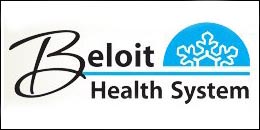Hospital Care

Certain patients present a health care conundrum. “Super-utilizers” account for only five percent of patients, but they accrue more than 60 percent of health care costs. These patients make frequent trips to hospital emergency rooms or have repeated inpatient hospital stays, resulting in costly health care, but not necessarily good-quality care. For example, one Pennsylvania woman had more than 50 CAT scans within a short span of time at various area hospitals. Super-utilizers often have multiple chronic medical conditions and social complexities that make their care difficult...


Impact
Crowded waiting rooms and long waits cause ED patients to leave the ED before being seen by a physician. Research has shown that some of the patients who leave have a serious medical problem that often gets worse before they are finally seen. By creating a Fast Track, a streamlined care pathway for low acuity patients, St. Elizabeth-Florence in the Cincinnati Alliance was able to reduce their Left Before Being Seen rate from 2.5% to 1.2% . This represents a 52% improvement!
Hospitals need to act to improve safety and reliability of care. AF4Q’s Hospital Quality Network connects 120 hospitals across the 16 Aligning Forces communities to implement, measure, and spread innovative strategies to improve the quality of hospital care. HQN hospitals are reducing readmissions, improving language services, and increasing throughput of emergency departments.
Six regions nationwide participate in AF4Q’s Transforming Care at the Bedside (TCAB) program, which taps nurses and care team members who spend the most time with patients and their families for ideas for transforming the way care is delivered on medical/surgical units.
 AF4Q’s Transforming Care at the Bedside is making a difference across the country by empowering nurses to make real change.
AF4Q’s Transforming Care at the Bedside is making a difference across the country by empowering nurses to make real change.
From The American Journal of Nursing: Several years ago Bonnie Glica, MS, RN, senior vice president of nursing at Erie County Medical Center in Buffalo, New York, began to understand why nurses at her facility weren't at the center of quality improvement efforts in areas such as pressure-ulcer reduction: they were waiting to be told what to do.
"Some staff would wait to take direction from nursing administration," she said recently, "rather than ask each other, 'What are we seeing today, and what can we do to make it better?'" …
“We go in with the training, create the agenda, bring the materials, said [Catherine] West. “We want to build infrastructure so that when Aligning Forces goes away they don’t just stop.” Catherine West, MS, RN is the quality improvement leader for Transforming Care at the Bedside at the AF4Q National Program Office.
For more information: http://www.hospitalcompare.hhs.gov


 ‘“The beauty of TCAB is that quality becomes practical in the hands of bedside nurses who are given the tools to conduct small tests and change, then adapt, adopt, or abandon those tests until an innovation becomes a new way of doing things,” said Judy Warmuth, RN and Wisconsin Hospital Association vice president of workforce. In the
‘“The beauty of TCAB is that quality becomes practical in the hands of bedside nurses who are given the tools to conduct small tests and change, then adapt, adopt, or abandon those tests until an innovation becomes a new way of doing things,” said Judy Warmuth, RN and Wisconsin Hospital Association vice president of workforce. In the